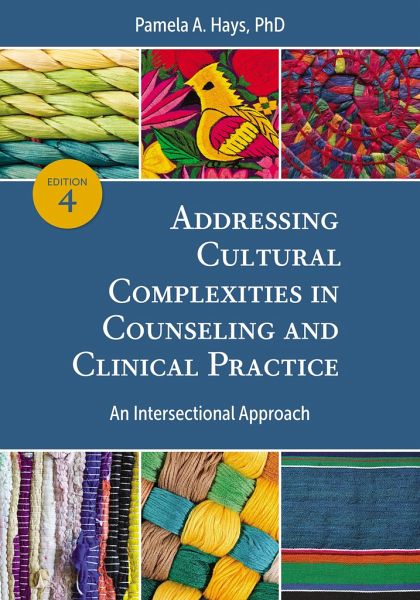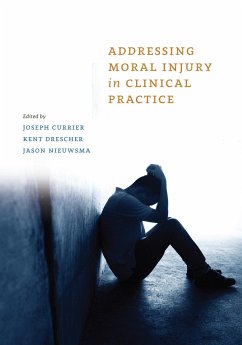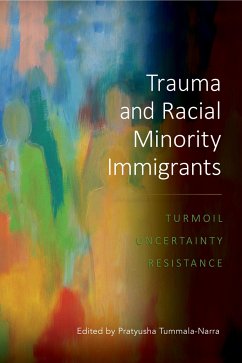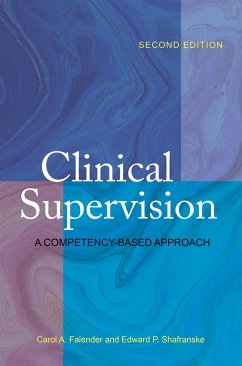
Pamela A Hays
Broschiertes Buch
Addressing Cultural Complexities in Counseling and Clinical Practice
An Intersectional Approach
Versandkostenfrei!
Versandfertig in über 4 Wochen

PAYBACK Punkte
45 °P sammeln!




This updated edition helps therapists understand the complex, overlapping cultural and social influences that make each client unique.
Pamela A. Hays, PhD, received her doctorate in clinical psychology from the University of Hawaii and completed a National Institute of Mental Health postdoctoral fellowship at the University of Rochester School of Medicine. She was on the graduate psychology faculty of Antioch University in Seattle, Washington, for years, and in 2 , returned to her hometown on the Kenai Peninsula in Alaska, where she has worked in community mental health for the Kenaitze Tribe's Dena'ina Wellness Center, in private practice, and served on the Board of the Alaska State Psychological Association. Her research has included work with Tunisian women in North Africa and with Vietnamese, Lao, and Cambodian people in the U.S. She is the author of Connecting Across Cultures: The Helper's Toolkit and Creating Well-Being: Four Steps to a Happier, Healthier Life coeditor of the book Culturally Responsive Cognitive amp ndash Behavioral Therapy: Assessment, Practice, and Supervision and coauthor of the book and video series Cognitive Behavioral Therapy Techniques and Strategies. Dr. Hays's work with clients is featured in several APA-produced DVDs, and she provides consultation and teaches workshops internationally. For more information on Dr. Hays's clinical practice, publications, videos, and workshops, visit https://www.drpamelahays.com.
Produktdetails
- Verlag: American Psychological Association (APA)
- 4th edition
- Seitenzahl: 371
- Erscheinungstermin: 18. Januar 2022
- Englisch
- Abmessung: 251mm x 175mm x 23mm
- Gewicht: 658g
- ISBN-13: 9781433835940
- ISBN-10: 1433835940
- Artikelnr.: 62762727
Herstellerkennzeichnung
Libri GmbH
Europaallee 1
36244 Bad Hersfeld
gpsr@libri.de
Für dieses Produkt wurde noch keine Bewertung abgegeben. Wir würden uns sehr freuen, wenn du die erste Bewertung schreibst!
Eine Bewertung schreiben
Eine Bewertung schreiben
Andere Kunden interessierten sich für











